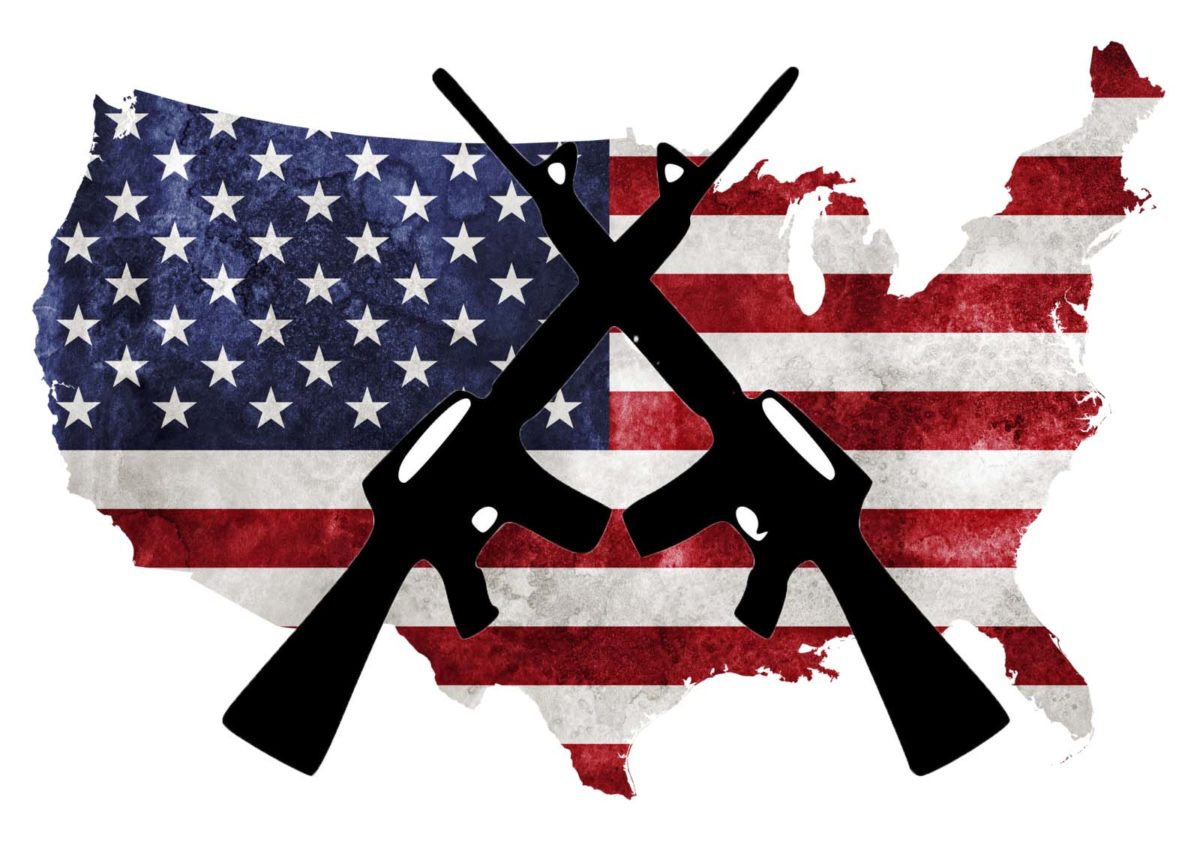I grew up in a household where we had four to five guns per person. And no, none of them are semi-automatic assault rifles. In my house, guns were tools used for hunting, how my dad helped provide food for our family. I was raised in a pro-gun environment — copies of American Rifleman were stacked on the back of the toilet in the bathroom. My little sister, who likes to hunt, received multiple guns as Christmas presents. That environment taught me to respect what guns are and the danger they can pose. The weapons were always locked up in a big safe with a heavy lock and only to be used with extreme caution for a specific purpose — hunting for food.
I’m from Connecticut, where you might remember 20 children and six teachers at Sandy Hook Elementary School lost their lives in 2012. I remember that day. It was a Friday afternoon, classes were out and I was walking to improv practice with my friends. An administrator told us we couldn’t stay after school. There had been a shooting that morning in another part of the state and everyone had to go home. It was Dec. 14, my dad’s birthday. I came home to my parents glued to the news on TV. The tragedy, the outrage and the heartbreak that followed eventually faded away. When we returned to school after Christmas break there were new security rules in place, and tinted films over all the windows in my high school so you couldn’t see in from the outside.
On Feb. 14 in a Parkland, Florida high school, 17 people lost their lives. Our media cycle, both news and social, are reeling with stories personalizing and politicizing this event. I’m heartbroken by the senseless loss of life, but what makes me angry are the uneducated comments, posts and articles being shared on social media that ignore facts and misrepresent the issue.
Gun control regulation is probably one of the most partisan issues in the United States. The right to gun ownership is ingrained into American identity and culture, which is why comparing the U.S. to other countries’ gun laws and gun violence rates is generally ineffective. America isn’t Switzerland or Japan or Australia, and its gun culture is never going to reflect those countries that seem to have it figured out. Those practices just won’t work in the U.S.
Still, something obviously needs to be done. According to The Washington Post, more than 150,000 elementary and high school students have experienced a shooting on campus since the 1999 Columbine High School massacre. That’s not counting non-school related shootings, like the one in Las Vegas this past October. That statistic is unacceptable.
So why can’t the U.S. get its act together and find a solution?
We’re seeing it all, from eagle-branded posts touting the “good guy with a gun” myth or the argument “criminals don’t follow the law so they’ll still get guns” emblazoned in red, white and blue to clickbait articles blaming toxic masculinity for gun violence and videos where adults take a 13-year-old to buy a gun to show how easy it is — with no emphasis on the difference between the .22-caliber rifle the boy bought and a military grade AR-15. Both sides of the gun control issue are guilty of spreading information that isn’t backed up by factual evidence and intentionally misrepresents the issue of gun violence in America.
This includes statistics about the issue itself that are intentionally misrepresented by the groups collecting them. You may have seen the statistic that the Parkland massacre was the 18th school shooting in 2018. What is not included in this fact from non-profit group Everytown for Gun Safety, is this statistic includes every time a gun was fired on school grounds, even schools that had been closed for months, or firings that had no victims.
What’s frightening is this statistic was picked up and reported by politicians, celebrities and reputable news sites like the BBC.
As a journalist and an American, this is infuriating. When misinformation is allowed to spread like wildfire, all it does is further divide at a time when we need to work together. Gun-control activists use incomplete data as evidence, and gun rights supporters use faults in the data to further discredit and ignore the other side’s arguments.
Andrew Pollack, father of Meadow Pollack, an 18-year-old who died in the Parkland shooting, said it best in an address to President Trump.
“We need to come together as a country, not different parties, and figure out how we protect the schools … It’s not about gun laws right now, that’s another fight, another battle … but we need our children safe.”
Division hasn’t and won’t protect the children and teachers of the United States. Only unity can do that, and for unity there needs to be an honest effort to learn the facts of the issue and understand different perspectives.

